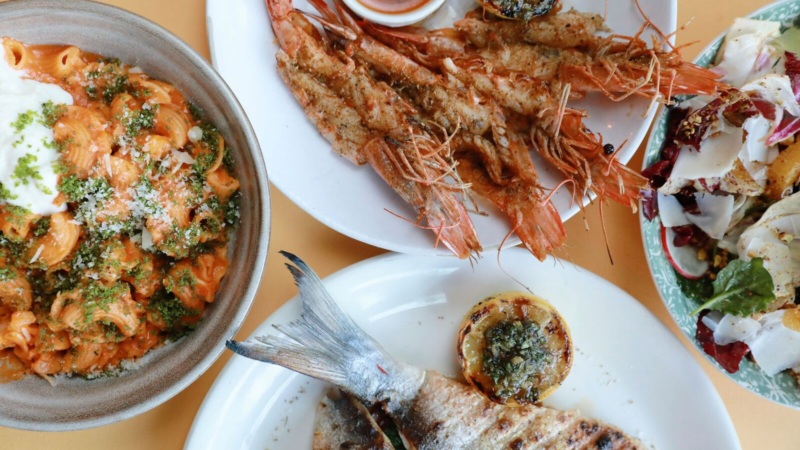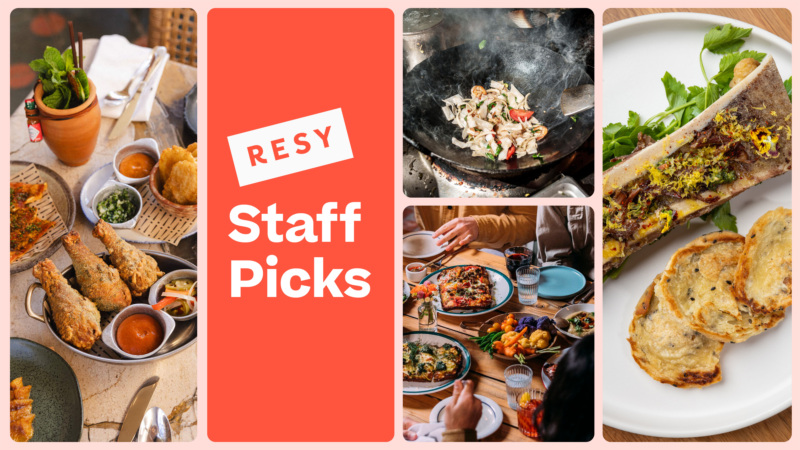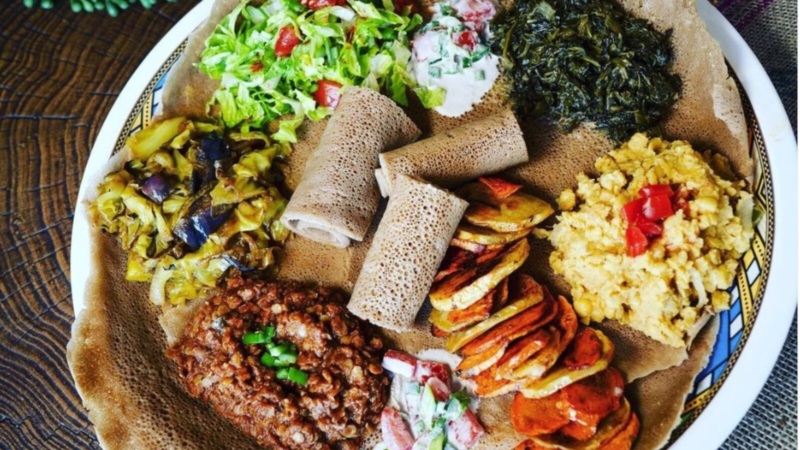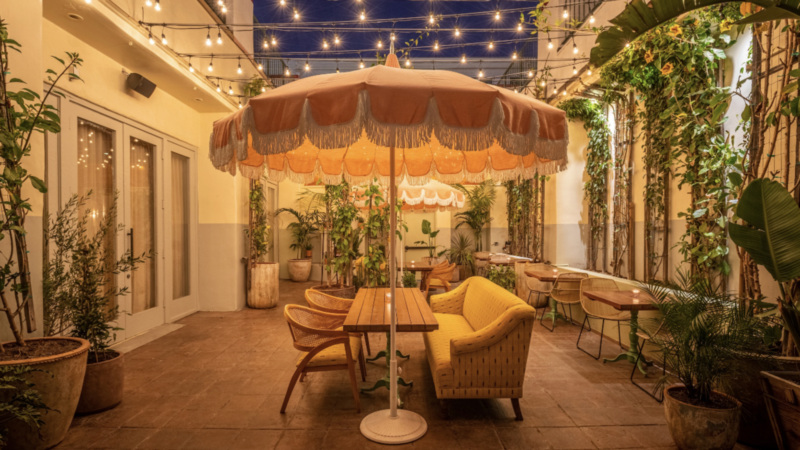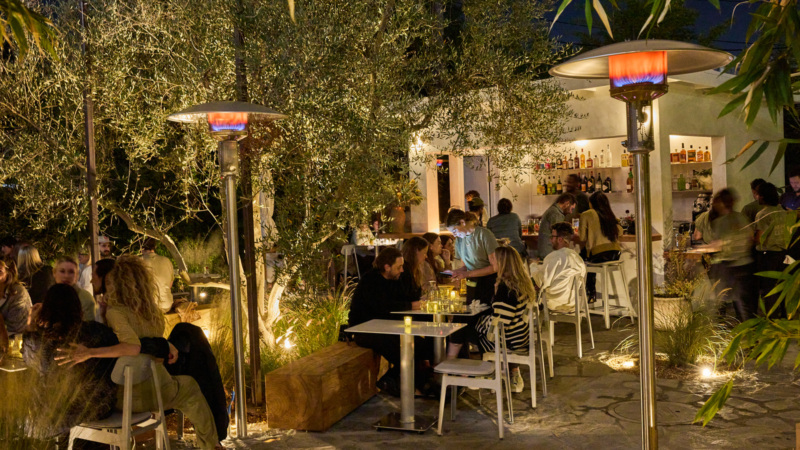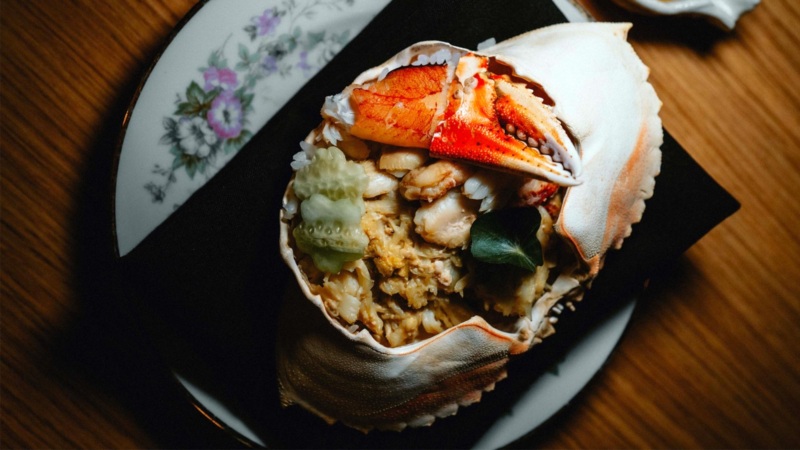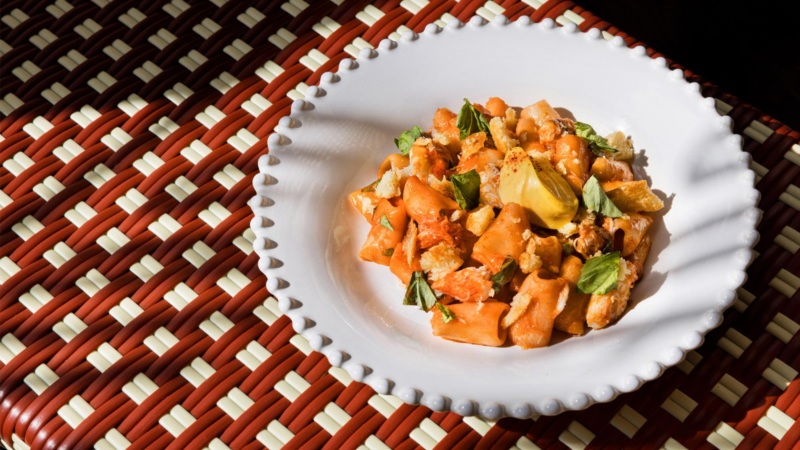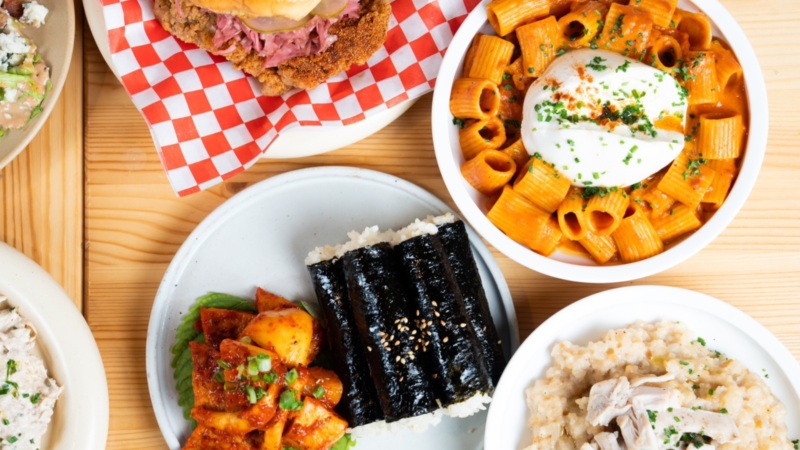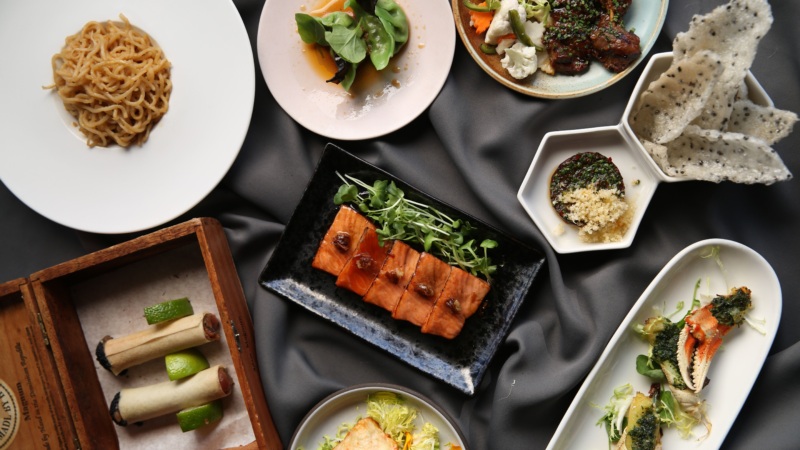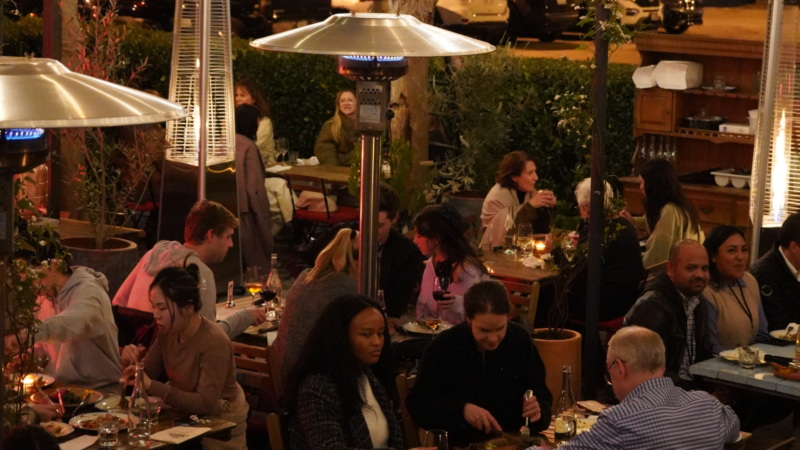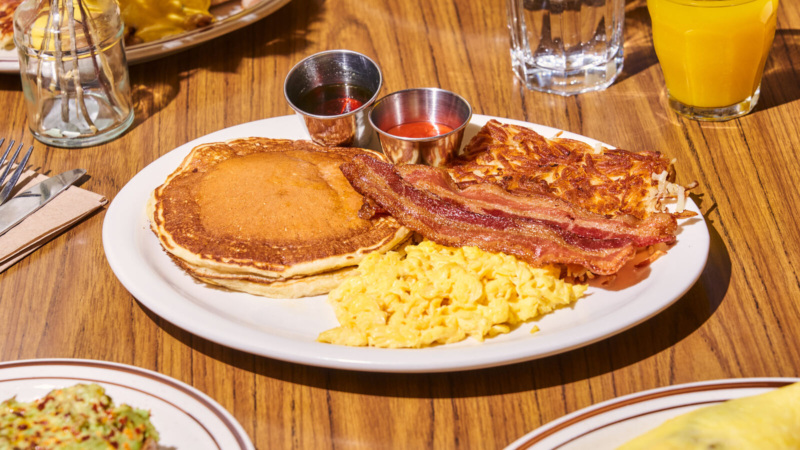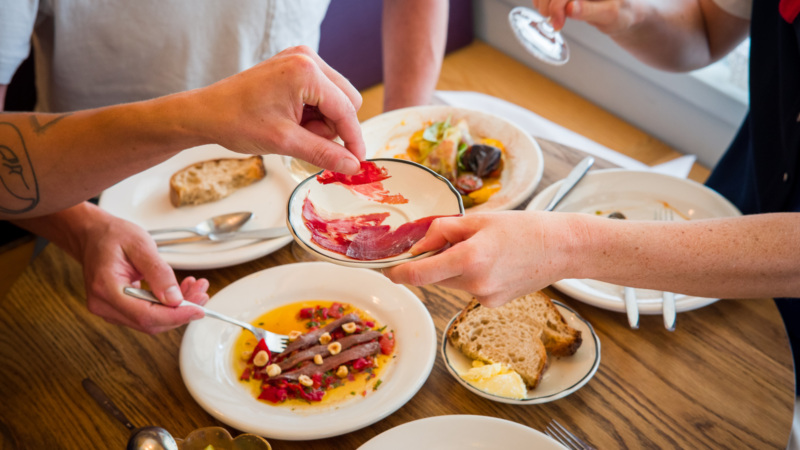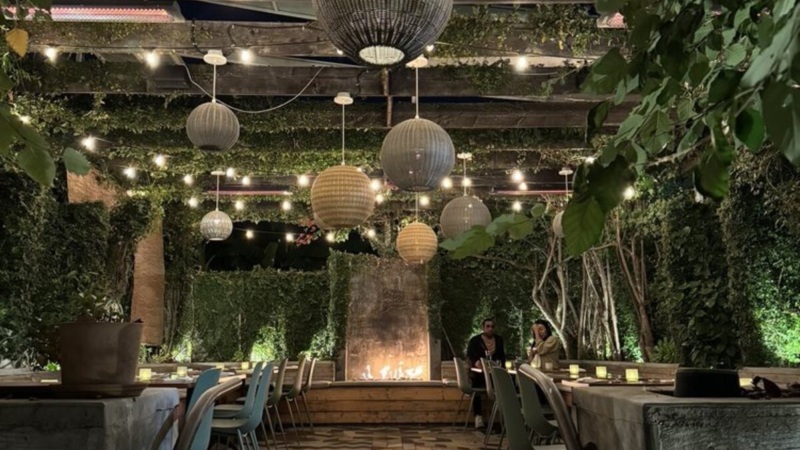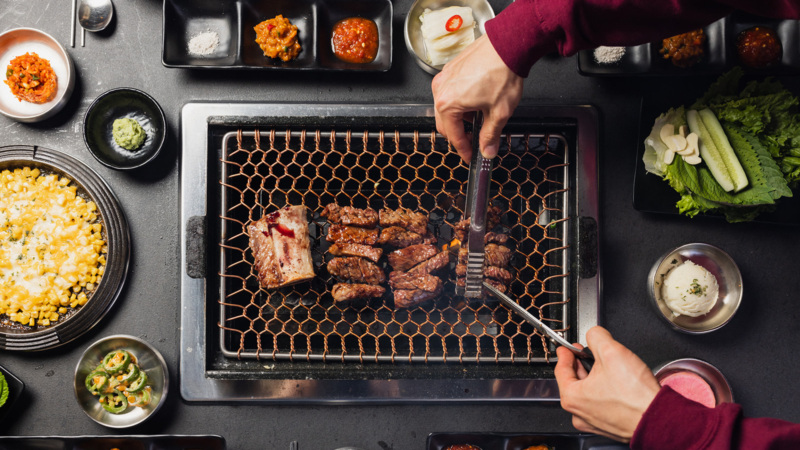

Behind the Scenes With L.A.’s Most Sought-After Restaurant Florist
At Tonchin on Melrose on a recent weekday morning, vats of tonkotsu broth in various stages of completion simmer in the kitchen while a carefully calibrated machine cranks out noodle ribbons in anticipation of lunch service. Up by the bar beneath a hand-dyed textile installation made by L.A. creative studio Lookout and Wonderland, a craft involving a different kind of perishable good is playing out in real time.
With clippers constantly in motion, Alice Lam is composing this week’s floral arrangements for the Los Angeles outpost of the Japanese restaurant that opened earlier this year. Today’s order of business involves making a large arrangement in a textured ceramic vase that picks up the subtle blue, gray, and purple-toned hues of the zellige tile-clad structural column positioned between the bar and the kitchen.
“I like to go a little more naturalistic, and more Japanese-leaning and ikebana-inspired,” Lam says about her approach to this particular space. “I play on the colors. It’s a bit earthier,” she adds, pointing to features like lightly toned wood wall panels stained to accentuate the grain, and russet brown tiles in the dining room. “Once in a while, I’ll add a little pop of color to keep it fresh.”



The wild chestnut tree branches and complementary gestural, droopy chartreuse foliage that she’s just starting to see at the flower market draws the eye but doesn’t compete with the surroundings. Lam places the finished arrangement in a corner where it makes a subtle statement while remaining safely out of harm’s way. She finishes a few smaller floral compositions in brown glass vases to add temporary flourishes to the interior, too.
Under the banner of A.L. Basa, flowers are Lam’s most recent creative and experimental medium. Ever since launching her business with Horses as a client in the fall of 2021, she’s found other restaurants who entrust her to add dimension to their spaces. In addition to Tonchin and Horses, Lam is given essentially free rein at Bar Chelou in Pasadena and Glassell Park’s Dunsmoor. She also collaborates with Bucatini on the specialty grocer’s occasional dinners and special events, makes unconventionally stunning arrangements and installations for brand launches and retail pop-ups, and when her mostly one-person operation allows, fulfills online orders.
Lam talks to Resy how she transitioned from the fashion industry to the world of floral design and why her own, sometimes unorthodox, creativity connects with chefs — and vice versa.


Resy: What does your work add to a space like Tonchin? What are you trying to bring in?
Alice Lam: A little bit of the outdoors, a little bit of nature. It’s nice to have this moment of flowers. People do look; they do just love flowers. I think also bringing in different colors and textures changes the space. Maybe that’s too abstract and I’m giving myself too much credit, but I think it can set a tone.
How did you get your start in florals?
I transitioned out of fashion in New York. I was a freelance creative, and I was styling for work. So that was how I started incorporating a lot of florals, and I wanted to develop that skill. I reached out to Melissa Brzuszek of Mizutama Studio who is very grounded in ikebana work. That’s why I wanted to learn with her. She’s a horticulturalist, and her sensibility is something I keep in mind. She really taught me in a short period of time — I’ve never worked at a traditional flower shop.
Long story short, I moved to L.A., I was working full-time for a fashion company doing content, and the pandemic hit. I was miserable at my job and I would just go to the flower market and the farmers’ market and buy flowers for fun. I did one little Valentine’s Day pop-up in my house, and then that led to one thing after another, and then I quit my full-time job.
People see it more as an art form in the same way that food is being seen that way, too. I think the shift is really that creativity is blossoming.— Alice Lam
How do you figure out what’s right for the space? Do your clients give you suggestions or make requests?
Everyone lets me do my thing. I guess I try to play on the environment because every restaurant has its own feel.
Do you look at menus for inspiration?
No, I just vibe off of what I’ve done before, what I haven’t done yet. And color.
What flowers are you excited to use when they become available?
My favorite all time everything — it’s not even a flower — is smoke bush. They’re like big, poofy clouds, usually in a light green and a burgundy tone. That’s my absolute favorite. I actually love working with branches and trees, too. That’s why I love doing larger scale things.
So because restaurants can get hot and crowded, do you chose hardier materials?
I do tend to do that. I pick stuff that lasts longer, like birch branches.


Will you do similar arrangements for multiple clients, or are you mindful about making each location’s arrangements unique to that place?
I have maybe one or two repeated ingredients, but I try to keep it different. I work around what the vibe is within that restaurant, and if there’s some crossover, it’s because I shop based on what I love. How can I make it work for this restaurant? I’ll pair it with something else. [Sometimes] I go a little bit more wild. Chef Doug [Rankin] at Bar Chelou says the wilder the better. At Dunsmoor, they’re pretty earthy. I swim between going naturalistic and earthy — and once in a while even bright — because the space is so warm it lends itself to a lot of color.
Are we still in this phase where people just know roses and carnations?
I would say so. I don’t think there’s a lot available to the masses. Unless you go to a farmers’ market — and I think there’s some really cool locally grown stuff — but you’re still limited to what’s local and seasonal. Which is great! But if you want to find something different and unique, you’re not going to find it there. I think a lot of people aren’t aware of how many flowers are actually pretty local at the downtown market. Most flowers are unfamiliar to the general public. So, I feel like a lot of things are still very new and different. There’s a lot of room to play.
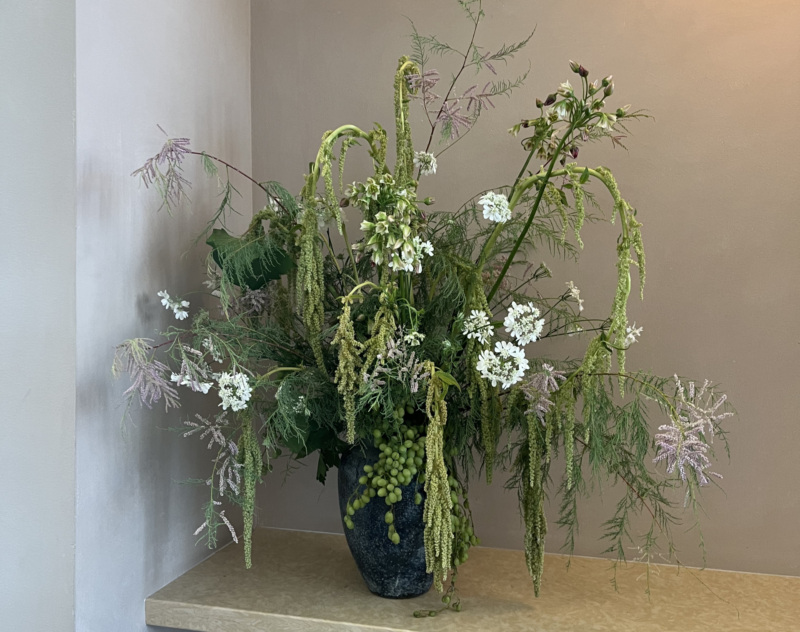

What do you think this enthusiasm for flowers among your clients says about food culture at large? Is there some kind of mirror, or connection there?
You can compare it to the ingredients you use and recipes. With cooking, okay, you want to make a pork dish. What ingredients can you build around that? Or with a seasonal squash at the farmers market that every chef wants, what can you pair them with? It’s kind of like that with flowers.
But in a more abstract sense, I think there’s a change in food culture and a shift in floral culture because they’re both growing exponentially. I don’t know if it’s just because I still consider myself a bit newer in the industry, but I see that it’s grown a lot through the pandemic. We’re still eating, we’re still buying flowers, people are still buying clothes. But I think there’s a shift in the way people enjoy things and so there’s an appreciation for flowers in a new way. There’s also more exposure now.
People see it more as an art form in the same way that food is being seen that way, too. I think the shift is really that creativity is blossoming.
Jessica Ritz is a freelance writer whose reporting passions include architecture, interior design, art, and food. Follow her at jessnritz.com and @jessnritz, and follow Resy, too.

